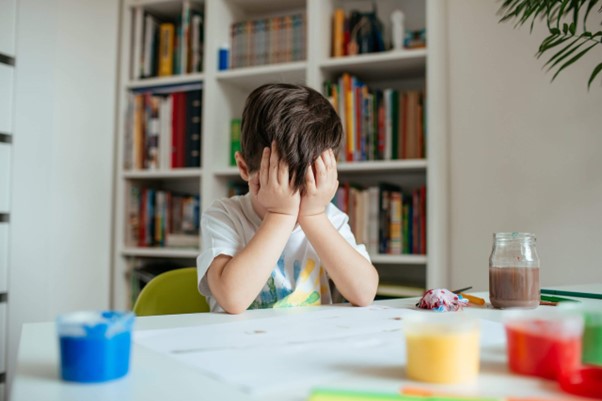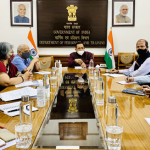It’s no secret that the Indian education system has its fair share of problems. From overcrowded classrooms to a lack of qualified teachers, the list goes on. However, there are also many innovative initiatives being implemented by the government to try and address these issues.
In this article, we’ll take a look at some of the main problems with the Indian education system and what is being done to try and solve them.
Brief history of education system in India
India has a long and varied history when it comes to education. For centuries, children were educated in Gurukuls, traditional institutions that focused on teacher-student relationships and the transmission of knowledge between generations. However, this system eventually gave way to a more modern approach after British control.
The Indian constitution after independence included the Right to Education, which provided free education for 6 to 14-year-olds. This was a major step forward, but the education system still had several flaws and loopholes that needed to be fixed in order for the country to prosper.
Pre-primary, primary, elementary, secondary, and higher education make up the current education system in India. While this system is an improvement over the previous one, it still suffers from some issues. For example, dropout rates are high due to poverty and lack of infrastructure in many parts of the country. In addition, there is a serious shortage of qualified teachers, which results in large class sizes and subpar instruction.
Challenges faced by Indian Education system
The Indian education system is facing a number of issues and challenges. These include high dropout rates in public schools, poor governance and lack of responsibility in government schools, lack of infrastructure, quality of teachers, and focus on rote knowledge.
1. High Dropout Rates in Public Schools
One of the major issues facing the Indian education system is the high dropout rate in public schools. According to a report by UNESCO, the dropout rate among primary school students in India is as high as 30%.
This is a cause for concern as it indicates that many children are not completing their basic education. There are several reasons for this high dropout rate.
One major reason for this is poverty. Many families cannot afford to send their children to school and many such families think that it would be better if they just help them in their day job.
2. Poor Governance and Lack of Responsibility in Government Schools
Another issue facing the Indian education system is poor governance and lack of responsibility in government schools. Often, government officials do not take enough responsibility for ensuring that all children have access to education or for monitoring the quality of schooling across the country.
As a result, there are large disparities between different states when it comes to educational outcomes. In some states, such as Kerala, literacy rates are quite high while other states like Bihar have very low literacy rates.
Furthermore, corruption is also rampant within the education system which further decreases its effectiveness. For instance, ghost teachers” who draw salaries but do not actually teach classes exist throughout India.
3. Lack Of Infrastructure
A third issue plaguing India’s educational institutions is inadequate infrastructure. Oftentimes, buildings housing classrooms fall into disrepair and lack basic amenities like running water and electricity. In addition, class sizes can be excessively large, making it difficult for students to receive individualized attention from teachers. With such subpar conditions, it’s no wonder why so many students choose to drop out before finishing their studies.
4. Poor quality of teachers
In India, there is a huge shortage of quality teachers. According to a report by the National Council of Educational Research and Training (NCERT), almost 60% of primary school teachers in India are not professionally qualified.
This means that they do not have the necessary skills and knowledge to teach young children effectively. This is one of the major reasons for the high dropout rate in public schools as well as for the poor quality of education in general.
In many of the state run government schools there are ghost teachers who draw salary from the state governments but have never appeared in the school campus.
5. Lack of focus on rote learning
Another issue with the Indian education system is that it often focuses too much on rote learning instead of conceptual understanding. This means that students are often made to memorize large chunks of text without really understanding what they are memorizing. This leads to a lot of frustration among students and ultimately results in them dropping out of school or failing exams.
Solutions to improve education system in India
1. Increase affordability of education
One of the solutions to solve problems in Indian Education system is to increase affordability of education. By increasing affordability, more people will be able to access education which will eventually lead to better quality of education.
There are various ways to increase affordability such as providing financial assistance, scholarships, fee waivers etc. Another way to increase affordability is by increasing government spending on education. This will help in improving the infrastructure and facilities available for students which will make learning more effective.
2. Improving quality of teaching
Another solution to solve problems in Indian Education system is improving quality of teaching. This can be done by attracting and recruiting better teachers through higher salaries and better working conditions. There should also be ongoing professional development programs for teachers so that they can keep up with the latest pedagogical methods and technologies.
3. Making learning more engaging
One way to make learning more engaging is by using technology in the classroom. Technology can be used for flipped classrooms, where students watch lectures at home and do exercises in class; or for online classes, where students can learn at their own pace. Technology can also be used for gamification, where games are used to teach concepts; or for simulations, where students can experiment with real-world scenarios without any risks.
Conclusion
In conclusion, the Indian education system is facing many problems, but it is also a challenge to overcome them. The government is trying to tackle these problems by creating more opportunities for students and teachers in the country.
It needs to be a joint effort of the government, teachers, and the entrepreneurs of the country.










